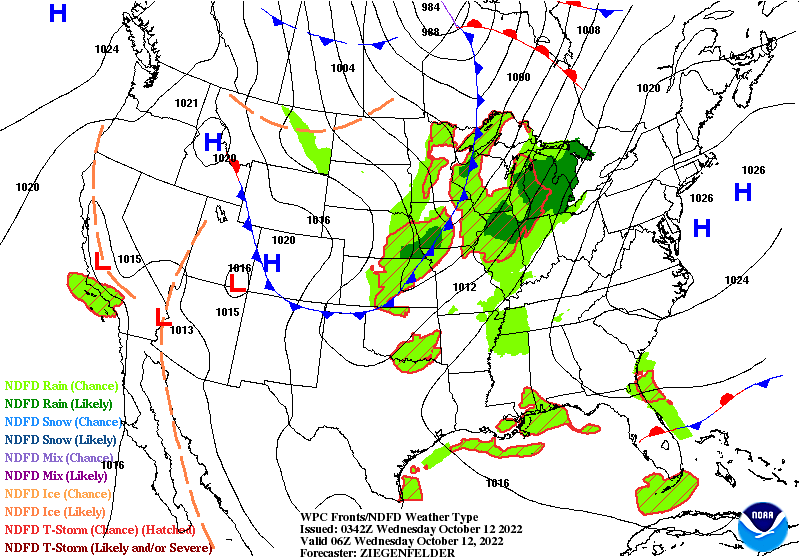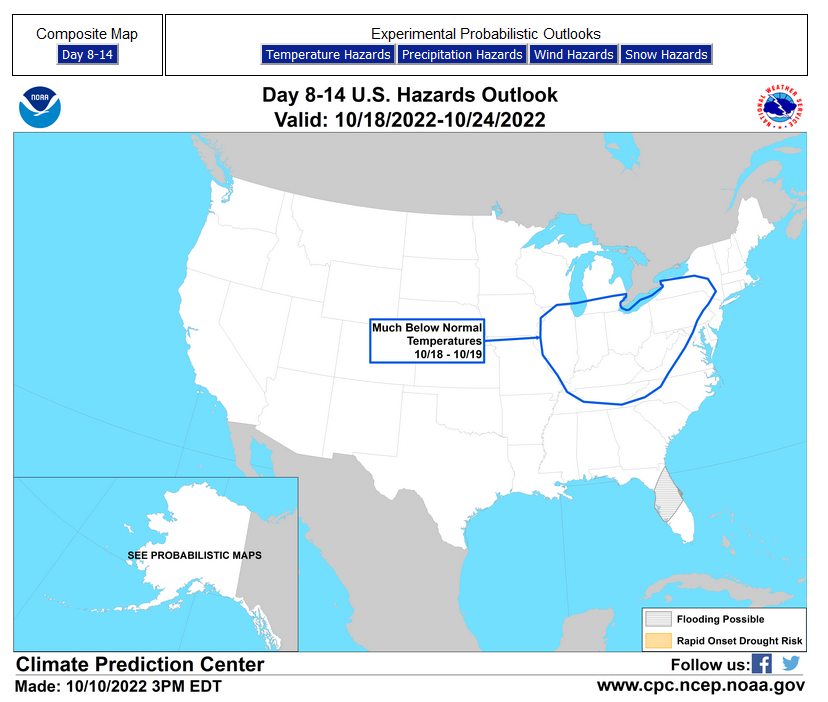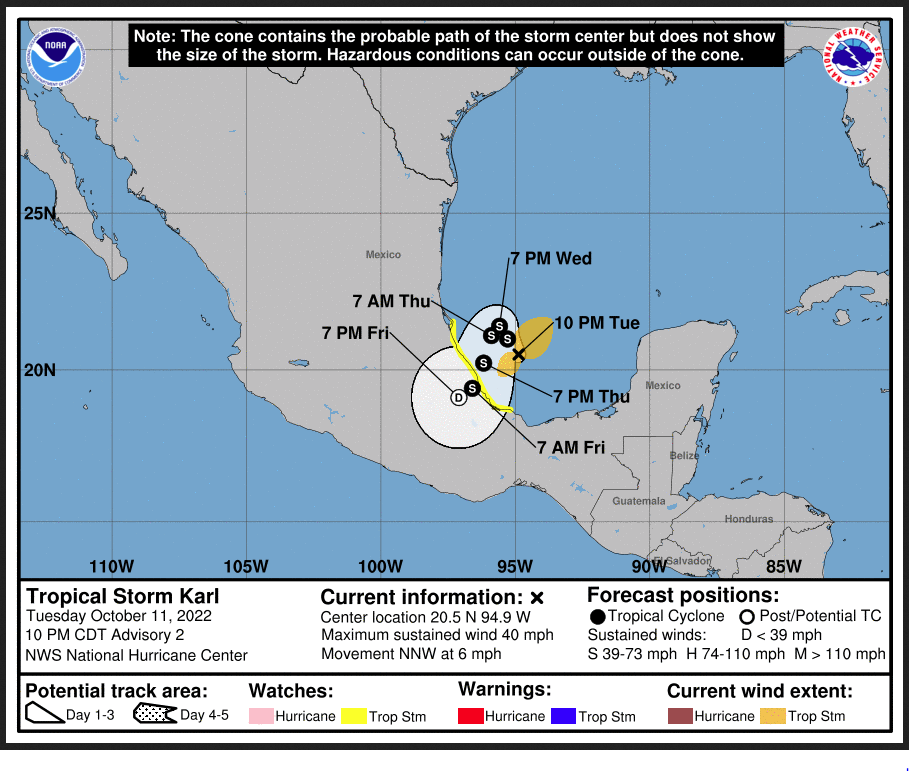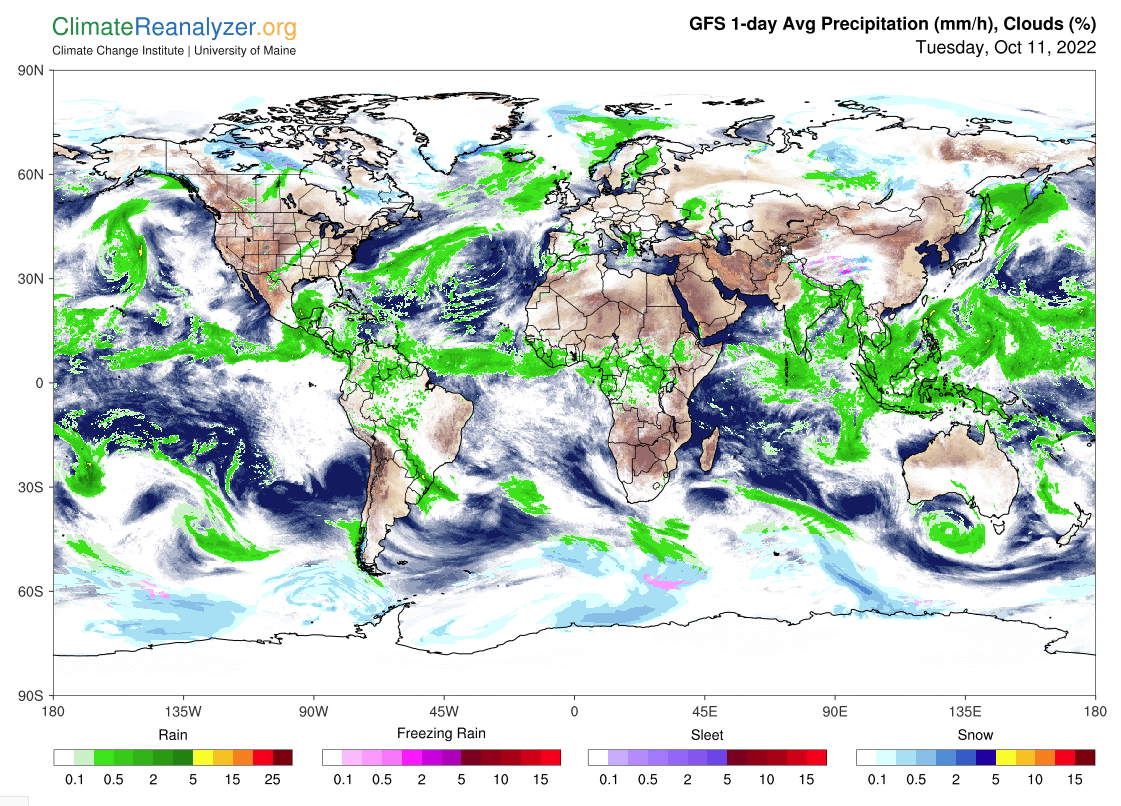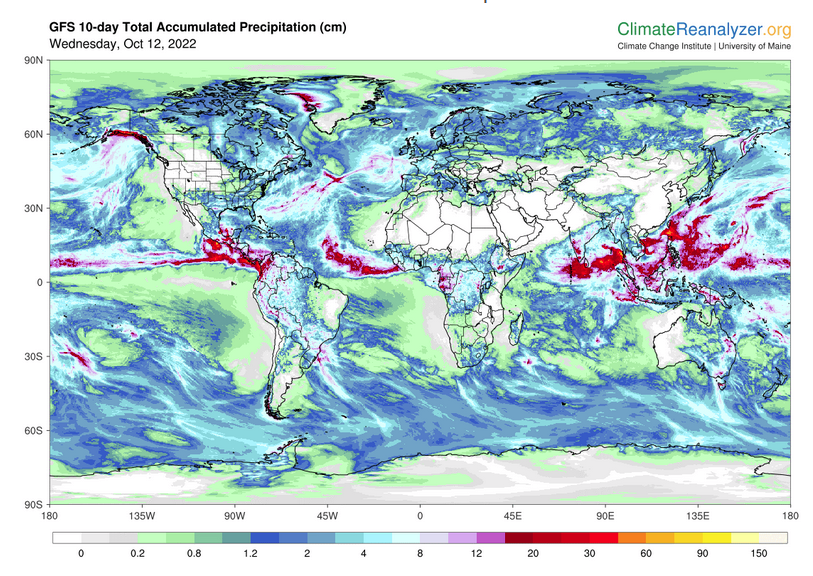Here is what we are paying attention to this evening and the next 48 hours from this afternoon’s NWS Forecast.
...Isolated Flash Flooding over parts of southern California through Thursday morning, Flood threat shifts east through the end of the week... ...Slight Risk of Excessive Rainfall over much of the Northeast Thursday through Friday morning... ...Elevated Fire Danger for portions of the Central and Northern Plains through Wednesday...
Continuation of the NWS Short Range Forecast (It is updated twice a day and these updates can be found here.
In the west, a wave of upper level energy is stalled just offshore of southern California, which will enhance convection over southern California over the next couple days. There is a Marginal Risk (level 1/4) of Excessive Rainfall through Thursday morning for portions of southern California where rain could lead to localized flash flooding, especially near steep terrain and burn scars. The flood threat will decrease on Thursday as the upper level feature pulls away from the coast slightly. Further East, an upper level trough will continue to dig into the Upper Midwest and Great Lakes region, which will push the cold front currently across the Northern Plains further southeast across the rest of the Central US. Strong winds behind the front will combine with low relative humidity values to produce areas of Elevated Fire Danger across the Central and Northern Plains through Wednesday. Red Flag Warnings have been issued for portions of the Plains where rapid wildfire spread will be possible. The cold front will continue to move southeast on Thursday across the Eastern US while a warm front lifts north along the East Coast. Rain chances will migrate northwards as the warm front moves, focusing the heaviest rainfall in the Northeast. On Wednesday, there is a Marginal Risk (level 1/4) of Excessive Rainfall across the Central Gulf Coast and into the Southeast. On Thursday, there is a Slight Risk (level 2/4) of Excessive Rainfall for much of the Northeast Thursday through early Friday morning. Scattered areas of flash flooding will be possible. Temperatures across the Central and Eastern US will drop behind the front as cold air moves in from the north. High temperatures in the 40s and 50s and low temperatures in the 30s will be common in the Upper Midwest and Northern Plains on Thursday. As the east cools, the Pacific Northwest will be experiencing above average temperatures. High temperatures are forecast to reach the 70s and 80s in Washington and Oregon, and some locations could reach near 90 degrees. Isolated record high max temperatures could be possible on Thursday.
Current forecast of heavy precipitation (Updates can be found HERE)
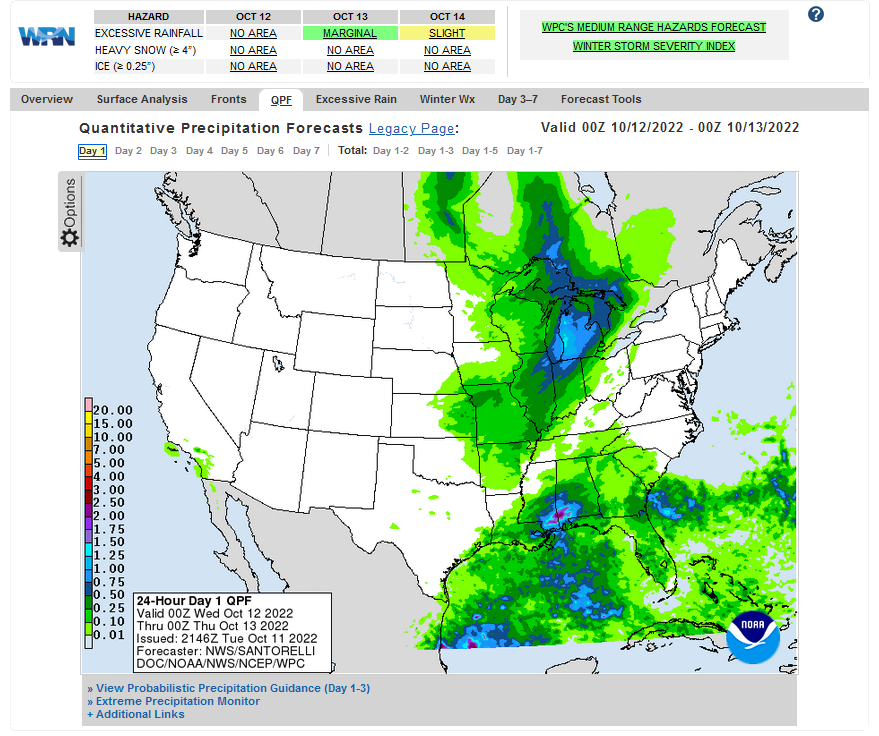 Maps that relate the forecast to geography can be found by clicking Here for Day 1 and Here for Day 2.
Maps that relate the forecast to geography can be found by clicking Here for Day 1 and Here for Day 2.
Here is a 60-hour animated forecast map that shows how the short-term forecast is expected to play out
If it needs to be updated click here.
HAZARDS OUTLOOKS
Click here for the latest complete Day 3 -7 Hazards forecast which updates only on weekdays. Once a week probably Monday or Tuesday I will update the images. I provided the link for readers to get daily updates on weekdays. Use your own judgment to decide if you need to update these images.
Worldwide Tropical Forecast
(This graphic updates on Tuesdays) If it has not been updated, you can get the update by clicking here This is a new approach and covers weeks 2 and 3 not weeks 1 and 2. It has more information but I am having trouble getting used to it. As usual, it comes with a discussion which is below
Detailed Maps and Reports for the Western Atlantic and the Pacific Oceans
Below are four maps that summarize the situation for the Atlantic, Eastern, Central Pacific, and Western Pacific. Additional information can be accessed by clicking HERE
First the Atlantic
Click to view the forecast map and have access to additional information https://www.nhc .noaa.gov/gtwo.php?basin= atlc&fdays=5
Then Eastern Pacific
Click to view the forecast map and have access to additional information https://www.nhc.noaa.gov/gtwo.php?basin=epac&fdays=5
Then Central Pacific
Click to view the forecast map and have access to additional information https://www.nhc.noaa.gov/gtwo.php?basin=cpac&fdays=5
And the Western Pacific
Click to view the forecast map and have access to additional information https://www.metoc.navy.mil/jtwc/jtwc.html
Some Intermediate-Term Outlooks
Links to “Outlook” maps and discussions for three time periods. Days 6 – 10, Days 8 – 14, and Weeks 3 and 4. An outlook differs from a forecast based on how NOAA uses these terms in that an “outlook” presents information from deviation from normal and the likelihood of these deviations.
You have to click on the links because they do not update automatically and I do not want to have stale images in the article. But it is not difficult to click on a link and you get a large image plus a discussion. On Fridays in a separate article, we will show the images and provide a link in this article that article. But remember what you will see is the images as of Friday. But here you can get the current images simply by clicking on them. Then hit the return arrow at the upper left of your screen to return to the article. You will not find this information easily anywhere else.
Right now you can find these maps here (We show them every Friday there but you can click above and find them).
Worldwide Weather
Below is the current or short-term precipitation forecast which can be updated by clicking HERE Additional maps can be obtained H ERE.
Month to Date Information
Month to date Temperature can be found at https://hprcc.unl.edu/products/maps/acis/MonthTDeptUS.png
Month to date Precipitation can be found at https://hprcc.unl.edu/products/maps/acis/MonthPNormUS.png

